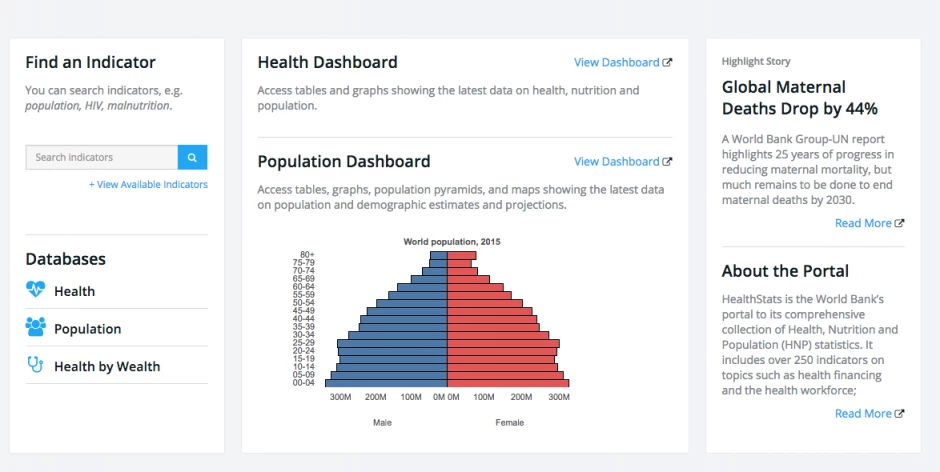Data on the size and wellbeing of the world’s populations are among the most widely accessed information on the World Bank’s Data pages.
Today we’re releasing a revamped Health, Nutrition & Population (HNP) Data portal which offers a quick look at over 250 indicators covering topics such as health financing and the health workforce; immunization and the incidence of HIV and AIDS, malaria and tuberculosis, non-communicable diseases and the causes of death; nutrition, clean water and sanitation, and reproductive health; as well as population estimates and population projections.
We encourage you to explore the resources above, here are three stories you can find in the data:
1) In low-income countries, only half of births are attended by skilled health staff .
Delivery assistance provided by doctors, nurses, and trained midwives can save the lives of mothers and children. While more than 70 percent births are attended by skilled health staff worldwide, this average falls to 51 percent in low-income countries. The poorest women are least likely to deliver babies with assistance from skilled health staff at birth.
2) Sub-Saharan Africa has the youngest population; Europe and North America has the oldest .
Due to high fertility and mortality rates, Sub-Saharan Africa’s population is the youngest in the world. 63% of the region’s population is under 25, compared with only 30% in Europe & Central Asia. On the other hand, due to low fertility rates and greater longevity, the share of population aged 65 and older is highest in Europe & Central Asia where 16% of people are over 65 - similar to North America’s figure of 15% and a sharp contrast to Sub-Saharan Africa where the share of the population over 65 has remained 3% for over 50 years.
3) Child Malnutrition is Most Prevalent in South Asia and Sub-Saharan Africa
Child malnutrition is most prevalent in South Asia and Sub-Saharan Africa where more than a third of children (36% and 34% respectively) are stunted in 2016. Although the prevalence rate has declined from 52% and 43% in 2000, South Asia and Sub-Saharan Africa hold the highest child malnutrition rates. More than 3 out of 4 (77%) stunted children of the world live in these two regions.
You can access all the data used in the charts above via the new Health, Nutrition and Population Data Portal and directly from the HNP database.





Join the Conversation